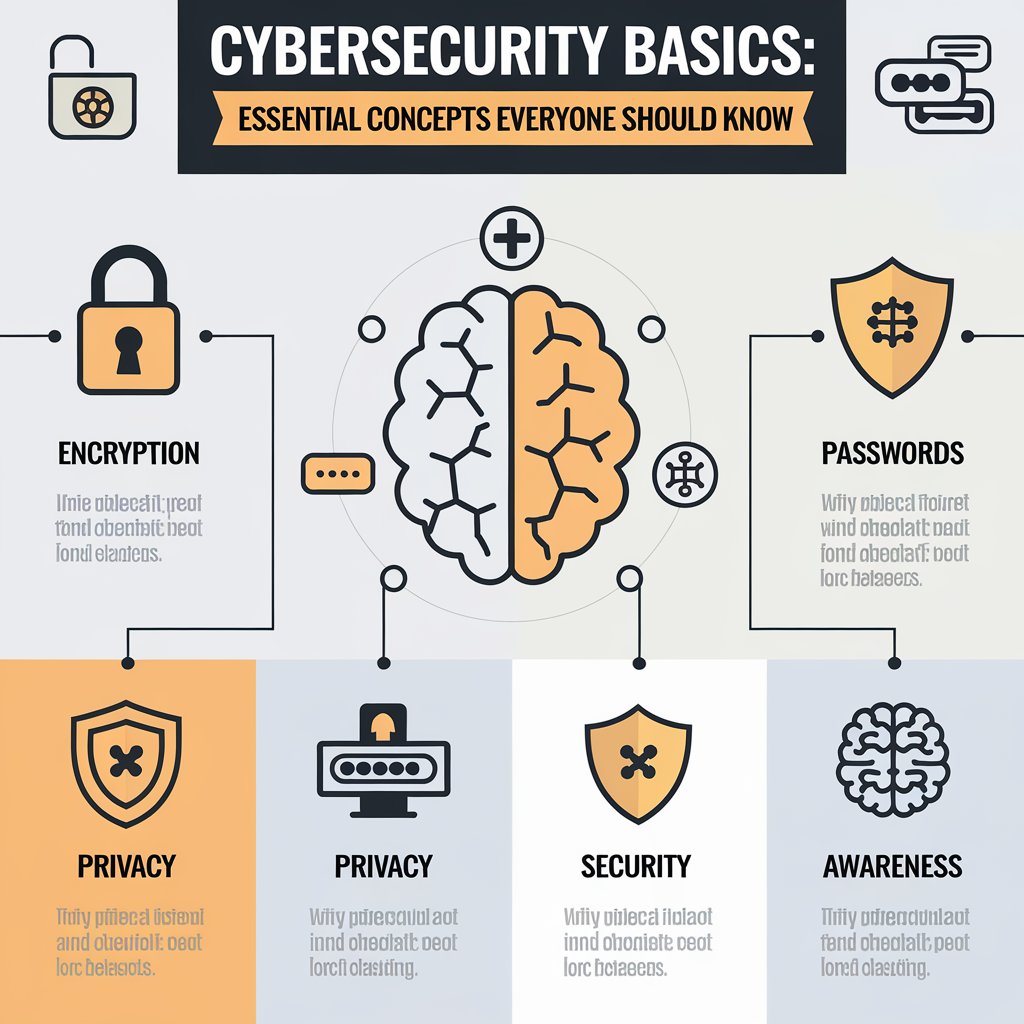Cybersecurity Basics: Essential Concepts Everyone Should Know
In today’s interconnected world, cybersecurity is essential for everyone—not just IT professionals or big businesses. With personal data, financial transactions, and sensitive information constantly at risk, a basic understanding of cybersecurity concepts is critical for protecting yourself and your digital life. Here’s a look at some key concepts in cybersecurity that everyone should know.
1. Understanding Cybersecurity and Its Importance
Cybersecurity is the practice of protecting computers, networks, programs, and data from unauthorized access, damage, or theft. As we become more dependent on technology, the risks associated with cyberattacks also increase. For individuals, cybersecurity helps prevent identity theft, financial loss, and privacy invasions. For organizations, it safeguards sensitive business data, ensures operational continuity, and maintains trust with customers.
2. Common Cyber Threats
Knowing the types of cyber threats is the first step toward effective protection. Here are some of the most common threats:
- Malware: Short for “malicious software,” malware includes viruses, worms, trojans, spyware, and ransomware. These can damage devices, steal data, or give hackers unauthorized access to your system.
- Phishing: Phishing is a method used by cybercriminals to trick individuals into revealing personal information, such as passwords or credit card numbers, by pretending to be a legitimate source.
- Man-in-the-Middle (MitM) Attacks: In these attacks, hackers intercept communications between two parties to steal data or manipulate information.
- Denial-of-Service (DoS) Attacks: These attacks flood systems or networks with excessive traffic, rendering them unavailable to legitimate users.
Understanding these threats can help you recognize potential risks and act to prevent them.
3. Passwords and Authentication
- Strong Passwords: Weak passwords are one of the easiest ways for hackers to gain unauthorized access. A strong password should be at least 12 characters long and contain a mix of uppercase letters, lowercase letters, numbers, and symbols. Avoid using common words, birthdates, or easily guessed combinations.
- Two-Factor Authentication (2FA): 2FA provides an additional layer of security by requiring a second piece of information—like a code sent to your phone—after entering your password. This makes it harder for hackers to access your accounts, even if they have your password.
4. Network Security Essentials
- Firewalls: A firewall acts as a barrier between your device and the internet, monitoring incoming and outgoing network traffic and blocking suspicious activities. Most operating systems come with built-in firewalls, but there are also external firewall solutions that offer enhanced protection.
- VPNs (Virtual Private Networks): VPNs encrypt your internet connection and mask your IP address, making it harder for hackers to track your online activities. They’re especially useful on public Wi-Fi, which can be vulnerable to cyber threats.
- Wi-Fi Security: Use strong, unique passwords for your Wi-Fi network and avoid using default router settings. Opt for WPA3 (Wi-Fi Protected Access 3) encryption if your router supports it, as it’s the most secure wireless encryption standard.
5. Software and System Updates
Software and system updates are more than just improvements or new features; they often contain important security patches to fix vulnerabilities that hackers could exploit. Whether it’s your computer, smartphone, or a smart home device, keeping all software up-to-date reduces the risk of cyberattacks.
6. Data Backup
Data backup is a crucial but often overlooked aspect of cybersecurity. Regularly backing up your data ensures that, in case of a cyberattack or hardware failure, you won’t lose important information. Use both cloud storage solutions and external hard drives to keep copies of your files. For added security, encrypt your backups to prevent unauthorized access.
7. Social Engineering and Awareness
- Social Engineering: Social engineering is a tactic used by cybercriminals to manipulate individuals into revealing confidential information. Common tactics include impersonating a friend or colleague to gain trust or creating a sense of urgency to prompt immediate action.
- Awareness: Staying informed about current scams, frauds, and cyber threats is one of the best ways to stay protected. Be cautious of unsolicited messages, verify requests for sensitive information, and avoid clicking on unknown links.
8. Protecting Mobile Devices
Mobile devices often hold as much sensitive data as computers, making them prime targets for hackers. Here’s how to protect them:
- Screen Locks: Use a password, PIN, or biometric lock to prevent unauthorized access to your device.
- App Permissions: Be cautious about granting app permissions, as some apps may request unnecessary access to data or features.
- Download Apps from Trusted Sources: Only download apps from reputable sources, like the Apple App Store or Google Play Store, and check reviews to avoid malicious apps.
9. Recognizing and Responding to a Breach
Despite taking precautions, breaches can still happen. Recognizing early signs of a breach, such as unusual account activity or changes in device performance, can help you respond quickly.
- What to Do If You’re Hacked: If you suspect you’ve been hacked, change your passwords, check your financial accounts, and run a virus scan. Consider reporting the incident to relevant authorities or seeking help from cybersecurity professionals if necessary.
- Account Recovery Options: Most major services offer account recovery options if your account is compromised. Familiarize yourself with these options, including how to reset passwords or recover lost data.
10. Cybersecurity Best Practices
Finally, here’s a quick checklist of best practices to keep you safe online:
- Enable firewalls and antivirus software.
- Use strong, unique passwords for each account, and enable two-factor authentication where possible.
- Avoid clicking on suspicious links or downloading unknown files.
- Regularly back up important data and keep software up-to-date.
- Educate yourself about the latest cybersecurity threats and tactics.
